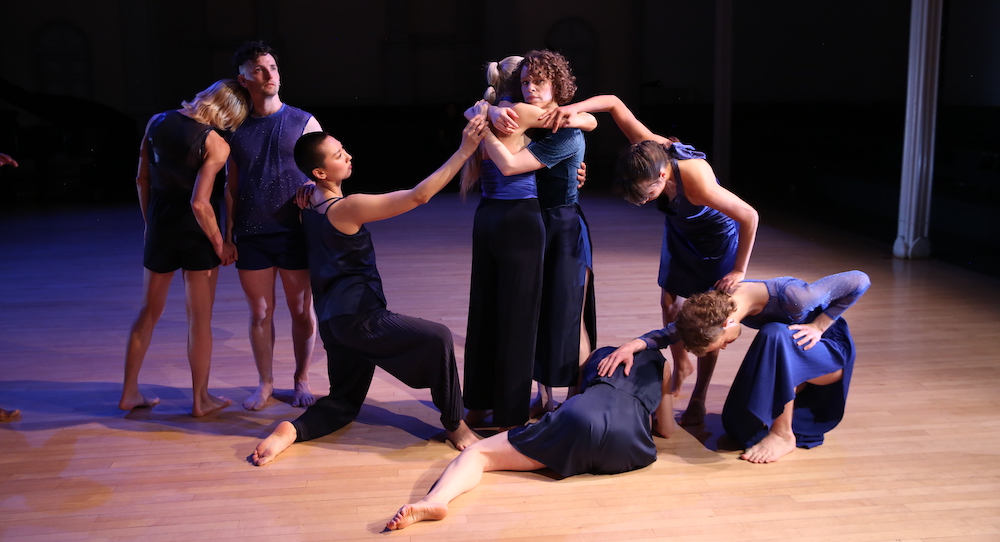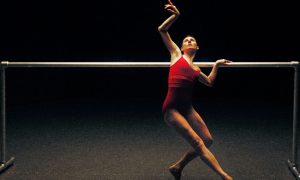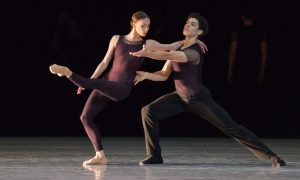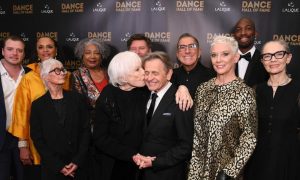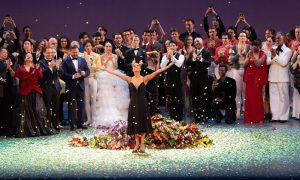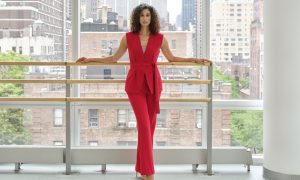Danspace Project, New York, NY.
June 5, 2025.
Megan Williams Dance Projects (MWDP) presented an evening-length work, Visible, in early June, at the Danspace Project at the Saint Mark’s Church-in-the-Bowery in NYC. The intergenerational work explores the seen and unseen identities within each of us, and uses dancers in their 20s through 60s, an atypical choice but one that supports the mission of the work. MWDP was started in 2016, and tackles a range of human experiences through dance. Music by Tristan Kasten-Krause and Alexander Scriabin was performed live (Isabelle O’Connell, Tristan Kasten-Krause, Brendon Randall-Myers and Zosha Warpeha).
Saint Mark’s Church is a longtime supporter of the arts and specifically dance. Modern dance legends like Isadora Duncan and Martha Graham both danced there, and Danspace Project has been running since 1974, providing space and aid to smaller dance artists. It’s fitting that Williams performed here – a space that is more than one thing and a space that’s stood the test of time is a perfect framework for this work, as it noodles through the ideas about the roles we play in our lives that remain tucked away, as well as honoring the value of dance artists far older than we often see performing onstage.
From the outside, one sees a steepled church, grand in nature, built of strong stone and trumpeting its purpose to the world. Beyond its formidable exterior, however, two worlds exist together: Episcopalian worship and dance (Danspace Project and New York Theatre Ballet, the latter of which uses the studio space). As Williams states in the program notes, “Dancing always gives us a place to be seen and a place to take refuge.” At its best, religion offers the same. The parallel nature of these ideas converging under the same roof reflects the abstract stories Williams tells in Visible.
The performance took place in a large hall, formerly used for services and currently retrofitted for dance performance. There are no wings and instead have permanent bleacher-like structures on three sides of the space — places the dancers lounged and watched the performance when they weren’t dancing themselves, an aspect of the work in and of itself, reminding us that dance contains additional power when observed by other humans.
It’s vital to note that when Williams chose to both dance in the piece herself, and include other dancers in their 50s and 60s, she demanded we see those parts that become hidden, either by our own selves, or the world around us. The inevitable bitter pill of a dance career is that it’s finite: something we all know going in, but is also something that could have a more nimble boundary if we choose to see it, and allow for it to expand. As an audience member, there was a particular serenity to watching older dancers onstage. They moved from a place of profundity and with a comforting gentleness.
Costumes in shades of blue, both vibrant and subdue, provided the visual reminder that things become clearer about who or what they are when contrasted with other things. Williams’ fearless choice to include a range of ages and the generosity of all the dancers to embrace it elevated this production. The dance world would be well served to see more such older dancers onstage. Alongside younger dancers, both shone brightly – the light of youth and the light of experience bouncing off each other to illuminate those hidden corners of each.
By Emily Sarkissian of Dance Informa.


